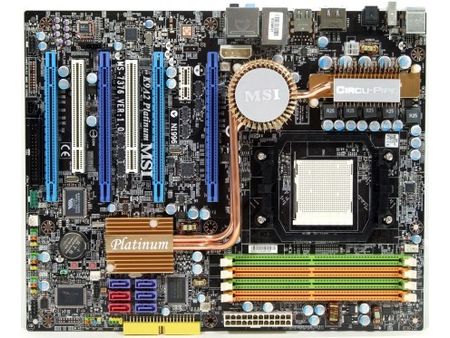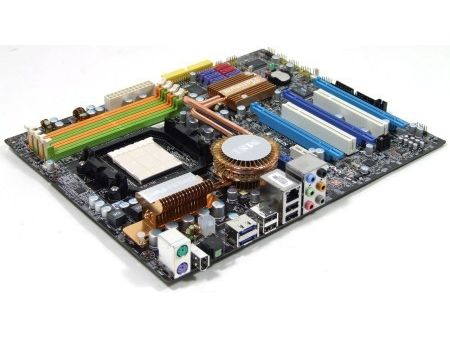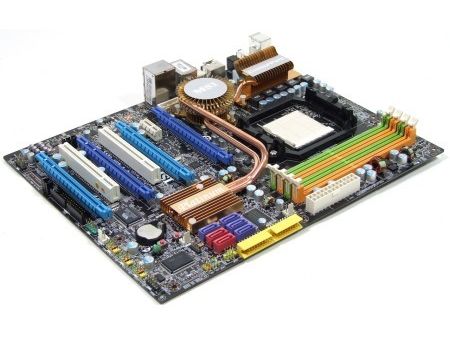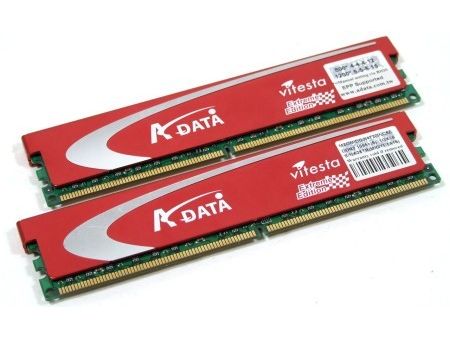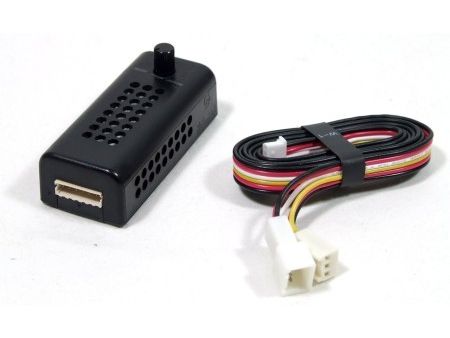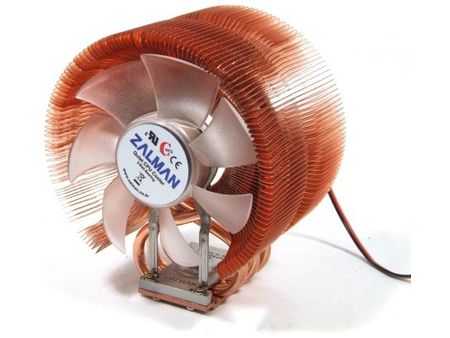35 AMD CPUs Tested for Power Consumption
Test System Components
The beginning of this article will focus on introducing all of the system components, because they play an important role in energy analysis. This will also help you achieve a better understanding of the performance capabilities of a complete system.
Our complete test system platform for energy measurement.
For our energy measurements, we used the MSI K9A2 Platinum motherboard, which is based on AMD’s high-end 790FX chipset. We chose the MSI board because it has a lower power draw than comparable products from Asus or Gigabyte.
Test motherboard: MSI K9A2 Platinum with the 790FX chipset.
The BIOS 1.3 equipped motherboard is used with standard settings, which means that all on-board components, like audio and serial ports, are turned on. The test system has 2 GB of DDR2 RAM memory from A-DATA. The Vitesta module is run at DDR2 800 with a timing of CL5.0.
2 GB DDR2 memory M2OMIDG314720INC5Z from A-DATA
Our cooler is the Zalman CNPS9700 LED, used with the Fanmate 2 fan controller.
Get Tom's Hardware's best news and in-depth reviews, straight to your inbox.
The cooler is set to maximum speed during the test, which enables our instruments to produce stable measurements.
Zalman CNPS9700 LED
Our system is equipped with a system cooler for the hard drive.
The WCL-03 system cooler from Noise Zero
Current page: Test System Components
Prev Page Energy consumption of 35 AMD-Processors Next Page Test System Components, Continued...-
Excellent article! It would be nice to see similar article for Intel processors because even if they are less power hungry, the Intel chipsets are not the "greenest". I am just considering a 24/7 home server and this information is very useful for me. Thank you!Reply
-
Good article! You have the wrong processor name listed for the 2.10 GHz G1 Brisbane as "Athlon 64 X2 4800+ EE". It should be 4000+. I was a bit confused when I read the performance charts and noticed two 4800+ listed until I realized the mistake.Reply
-
xoham Intel is not the greenest if it is less power hungry? Do they not meet RoHS standard or something?Reply -
zenmaster He said the "Intel Chipsets" are not the greenest.Reply
The are still built on the 90nm process.
The P45 will introduce the 65nm process on the chipsets.
The latest AMD Chipsets use the 55nm process.
In regards to CPUs, The Intel CPUs generally use less than the AMD CPUs.
He was simply pointing out that the CPUs lose some of the benefeit of their low power consumption due to the chipset.
For lower-end chips sitting idle, the difference in power usage of the chipsets can be significant. If you are looking at a higher-end chip under load, the power usage of the chipset becomes nominal. -
einheriar besides that intel still has the memory controller as a separate chip on the motherboard, where as amd has that included on the chip.. therefor a higher chip power use might be offset by the absence of the external memory controller, which would become visible when idling ..Reply -
so my x2 4000 ee (in tables interpreted as one of 4800's - due mistake) isn't so bad after all, I don't care about 2w/hour, when I have 24" lcd :-)Reply
-
Mathos The extra power consumption on the Phenom is due to the fact that the NB/IMC voltage stays at 1.250v even when the rest of the processor is running in standby. Kinda of annoying that they put it that high, since with a bios that still has the p-states section you can easily under volt the IMC without losing stability, especially at stock speeds. That will cut down on the idle and load power usages drastically.Reply -
royalcrown I like how review site all push efficiency now since AMD can't really compete on performance. Yawn.Reply -
jprevost Bravo for a great technical article. I can't tell you guys how nice it is to see some great charts. Charts are good, and you guys are good at charts, just don't stop adding to them!Reply

